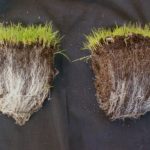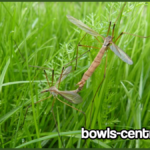We have had a few queries asking about thatch; actually a few readers asking for a definitive description of thatch and its associated problems, so here it is: What is it? Thatch is the name given to the mat of dead roots and shoots that accumulates on the surface of the green. Where moisture, nutrition …
Search for thatch - 158 results found
Deal with thatch and compaction Now
Regular readers of my articles will know my views on bowling green maintenance problems; essentially there are only 2 that you have to worry about. Everything else that goes wrong with greens is a symptom of these big 2 issues or indeed a symptom of the commonly held views on how to tackle the big …
Bowling Green Opening Day Preparations Step 2. Action Plan
The Bowling Green Opening Day preparations are vital to the playability of the green in the early weeks of the season, but don't try to force things along too much. John Quinn details some of the most important considerations for this critical period in bowls green maintenance
Opening Day Preparation Step 1. Evaluation time.
Key Elements for Success with Natural Greenkeeping

As greenkeepers, we understand the importance of maintaining a healthy, vibrant and resilient green. In over 40 years of greenkeeping, however, I've noticed that a lot of what passes for greenkeeping has actually been very damaging to our soils, making it increasingly difficult to produce a good surface, reliably and economically.
A lot of greens are now difficult to maintain, exhibiting a host of common problems such as Localised Dry Patch, Moss Infestation, Excess Thatch, Disease, Thinning Grass Cover, Puddling, Bumps, Bad Runs and Dips
Mycorrhizal fungi and turf health, better bowling greens rely on us understanding this.

Mycorrhizal fungi and turf health go hand in hand. The symbiotic relationships that exist between our turf grass plants and soil fungi are critical to producing a high performance, perennial grass dominated sward. Here we look at the benefits of mycorrhizal relationships in turf and the techniques greenkeepers can employ to encourage them.
Grass Root Defences: Leatherjacket control in Bowling Greens

Grasses employ a range of physical, chemical, and indirect defences to protect their roots from insect herbivores. Further research is needed to fully understand these mechanisms and to explore other potential defences, but meantime, we can take some of this knowledge and apply it now to our greenkeeping practices.
Grass, greenkeepers and the soil food web

The soil food web has become an increasingly popular term in greenkeeping and bowling green management. The problem-solution-problem, or symptoms approach to greenkeeping has been exposed as fundamentally flawed by the diminishing list of available pesticides now available to turf managers. Is there a better way to manage greens...yes. And the extraordinary discovery is that a greenkeeping program that focusses on the green as an eco-system is fully compatible with producing tight, natural turf dominated by the fine perennial Fescue and Bent grasses.
Sweat the small stuff, for a high performance bowling green this year
If your green maintenance budget was cut in half this year what would you do?
Most clubs when faced with cuts to the greenkeeping budget, will try at all costs to keep the most important work in the plan. Unfortunately, important frequently gets confused with dramatic, which means that the big expense of top-dressing in the spring and autumn usually stays in the plan and I wish it didn’t for all the reasons I’ve explained over many articles.
Meantime, the work deemed less important and which of course is less dramatic is often sidelined or dropped as a result of a fear of what might go wrong if the big, sexy stuff is missed. These big jobs “must be doing a lot of good”, or so the thinking goes, because they’re so expensive and disruptive?
50 Years of Sand

From the very beginnings of the game of bowls, most clubs bowled on a green constructed largely of local top soil, built, prepared and seeded by the club members, perhaps with the help of a local gardener or farmer. Maintenance was largely mowing, turning the rinks on flat greens, keeping the surface clear of debris and worm casts and an occasional roll before a big match. In the autumn, a squad of members would descend on the green with forks to aerate or spike the green, before putting it to bed for the winter with a final cut and perhaps a bag of fertiliser.

